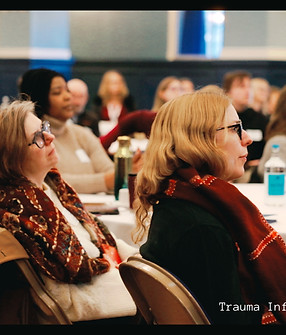Our Approach to Change
and 'Evaluation'


We build learning cultures
Why are learning cultures important?
-
Personal mastery is needed to create a personal vision of what being training informed is.
-
Mental models of a trauma informed approach create a framework for understanding the nature of the primary task.
-
Building a shared vision involves a group coming together to define their commitment to being trauma informed.
-
Group learning helps people to notice what helps and hinders them being trauma informed.
-
Systems thinking help the group see the importance of a TI culture built from their networks

Taking a reflective and iterative approach is useful because change will emerge over time and is assimilative. It requires attainment to evolving needs and attention to unintended consequences as well as hoped for outcomes. We may draw on a process called ROOTS because it addresses underlying causes to complex problems.
“The process of completing ROOTS is as important as the finished report. It is through the consensus decision making on practice points, reflecting on how well it is embedded using actual examples and then deciding how to take it forward that ROOTS uses what we know about complex system change. It builds shared awareness, shared motivation and shared goals. It assimilates multiple narratives. It deepens individual understanding and networks their efforts to others. The process of undertaking ROOTS is therefore one that should be savoured in itself.” Dr Angela Kennedy
.png)






